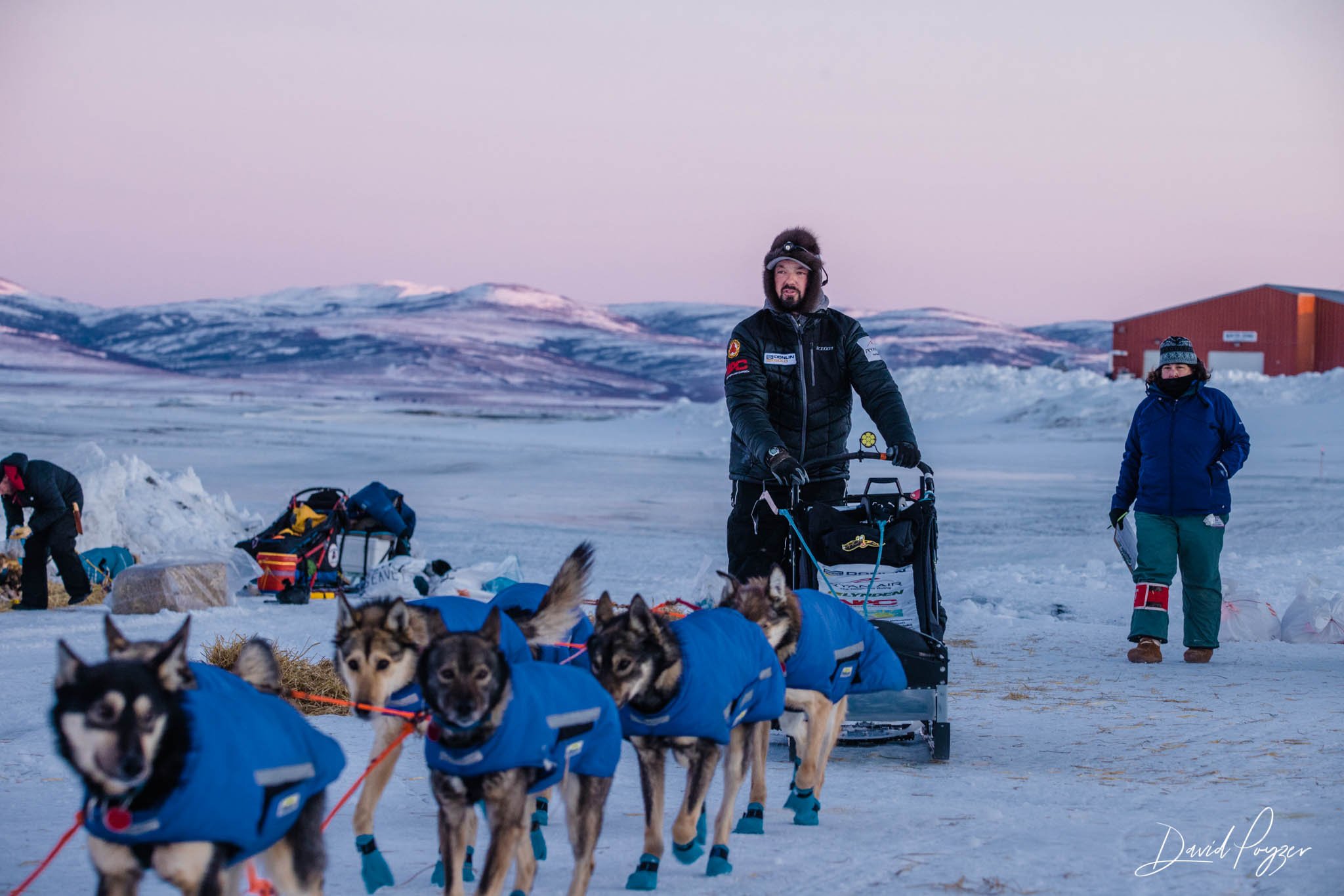The Most Important Changes In This Year’s Iditarod
In March last year, Iditarod mushers were chased down the trail by a pandemic. Now, 12 months later, the world is still in the midst of the disease. The threat of Covid-19 has turned our lives upside down and is also leading to changes for the 49th iteration of The Iditarod Trail Sled Dog Race.
Rarely has "the great, unknown" been better suited to describe this race. This year all participants are back to being rookies. No one has run the race this way before. Old plans, routines and strategies must be thrown away, in favor of new thinking and ongoing adaptation on the trail. This is exactly what makes the race more exciting than ever!
“I think this is going to be a really interesting race, because it’s so different and there’s so many options on how mushers can take on this years challenge. I’m really excited to see the different strategies in order to be competitive”
What is QRILLPAWS? -QRILLPAWS brings the excitement, joy and extreme performance from the most exotic dog mushing races to a worldwide audience. During the...
Here are the most important changes in the Iditarod Golden Trail Loop 2021:
The show start was canceled, instead the organizers have held a virtual banquet for mushers and fans.
The race starts from Deshka Landing in the Susitna Valley.
There are a total of 47 participants this year. They have been tested (Covid) several times before the start and will be tested further during the race.
The race is shorter, but still not short, with a total of 852 miles (1371 kilometres).
The route follows the traditional southern route up to the town of Iditarod, then goes to the ghost town of Flat, which serves as a turnaround point.
This means that the windy and often demanding coastline is eliminated in this year's race, but that does not mean that it is easier. The dog teams have to traverse the highest elevations of the course as well as the "Steps", the Farewell Burn, and Dalzell Gorge not just once, but twice (!), before the finish line at Deshka Landing.
Iditarod has 40 hours of required rest. The long 24-hour rest may be taken at any checkpoint up to and including Iditarod, but not after. The 8-hour required Yukon River rest can be taken at any checkpoint from Rohn and back to Rohn. The 8-hour required White Mountain rest will be taken at Skwentna on the return trip to Deshka Landing.
What is QRILLPAWS? -QRILLPAWS brings the excitement, joy and extreme performance from the most exotic dog mushing races to a worldwide audience. During the...
“Another thing that makes this year’s route demanding is that there will be changes to the checkpoints”
This year's checkpoints are Skwentna, Finger Lake, Rainy Pass, Rohn, Nikolai, McGrath, Ophir and Iditarod - with the same checkpoints on the way back. Frequently used checkpoints for the 24 hour rest, such as Takotna and Cripple, are not an option this year. This is something that will shake things up a little.
“There will also be less service and little access to heated sleeping facilities at the checkpoints, and more demanding to get clothes dried and recharge batteries, etc. This will require more of the mushers both physically and mentally”
He believes that the musher who manages to adapt to changes without being stressed or letting the unforeseen affect the mood, will have advantages.
A fast team at the second half of the race is always plus, and perhaps especially this year, when the slow-moving coast has been replaced by more easy-to-run trails inland, but as always there is a crucial element beyond everyone's control: the weather. It will be sunny and mild during the start, but the weather can change quickly!
You can follow the start live here
Tuesday, March 1st 2022, Ryan Anderson and his dogs crossed the finish-line first in Grand Portage, making him the John Beargrease Sled Dogs champion.
Redingtons bold move backfired - he’s out of the race!
We can finally say it once again - QRILL PAWS 2022 IS READY TO ROLL! That’s despite another difficult year for race organizers and everyone involved in sled dog events.
Aker BioMarine, the Norwegian biotech company behind QRILL PAWS, launches QPaws - The Dog Activity App to help track and improve the health of active dogs across the globe.
We think knowing the basics in nutrition is important for anyone. That’s why we decided to write a series of articles on basic dog nutrition. First topic up - water and energy sources.
Summer is here, and it’s time for long, relaxing walks in the nature with your furry little friend. Unfortunately, it’s also time for ticks to start crawling around in the bushes. Take your precautions to make sure that the bug doesn’t ruin your summer!
The name “canicross” is a combination of the words “canine” and “cross-country”, which is actually a great description of the sport. Canicross is simply cross-country running with your dog!
Over the past weeks, Norway’s Toughest Dog has been crowned amongst the dogs who were signed up for Femundløpet 2021. Furry rocket Ronja took the title home, together with a ton of dog food for herself and her kennel. With the amount of requests and questions about a competition for all dog owner, we weren’t in doubt - #mintøffing2021 became a reality!
After three years, Dallas Seavey is returning to the Iditarod, after the 2017 helter skelter incident that shocked his life and mushing career.
The mushers have to relive their own nightmares on the way back over the trail's most demanding sections between Nikolai and Finger Lake.
After three years, Dallas Seavey is returning to the Iditarod, after the 2017 helter skelter incident that shocked his life and mushing career.
At age 10 she harnessed her border collie Bear and a goat to pull hay to the horses. Now, for the 19th time, Jessie Royer (44) has harnessed her 16 most competitive dogs to win Iditarod.
Growing up with sailing and surrounded by golden beaches on the East Coast, Susannah Tuminelli has travelled a long way, when she now starts on the trail.
In March last year, Iditarod mushers were chased down the trail by a pandemic. Now, 12 months later, the world is still in the midst of the disease.
The Swiss born Martin Buser (62) lines up for his 38th Iditarod race this year. The Wayne Gretzky of dog sledding, has been inducted into the Alaska Sports Hall of Fame.
In the aftermath of cancelling this year’s edition of Femundløpet, organisers and sponsors put together the alternative online competition – Norway’s Toughest Dog. And what a support from the community!
Even though this year’s race had to be cancelled due to Covid-19 restrictions, there will be winners. And the prize is no less than 1000 kg dog food. The famous Norwegian dog trainer Maren T. Rørvik leads the jury.
As a fantastic way of thanking the everlasting effort from the organisers of Beargrease 2021, the mushers put on the most thrilling final sprint in the history of the race. In the end, only 7 seconds separated 1st and 2nd.































